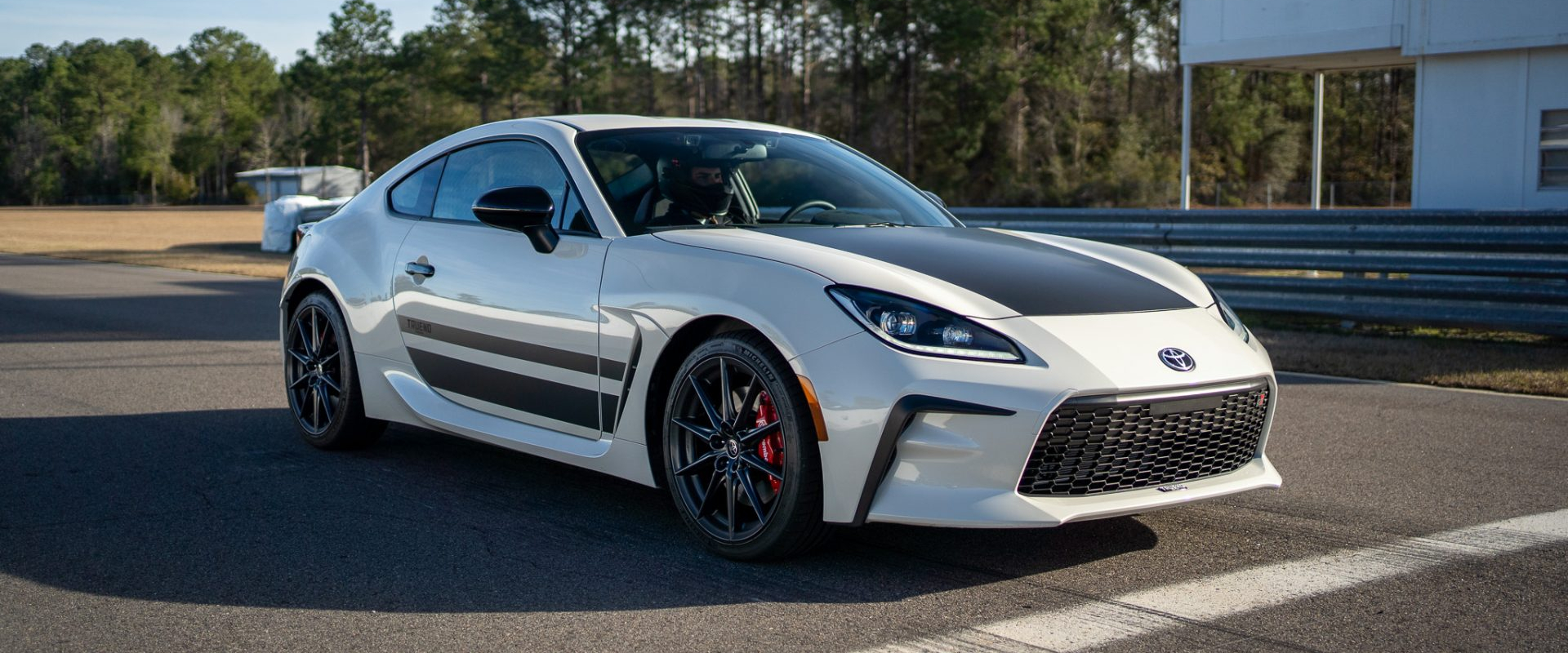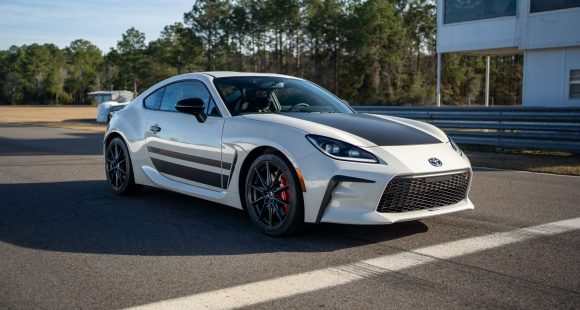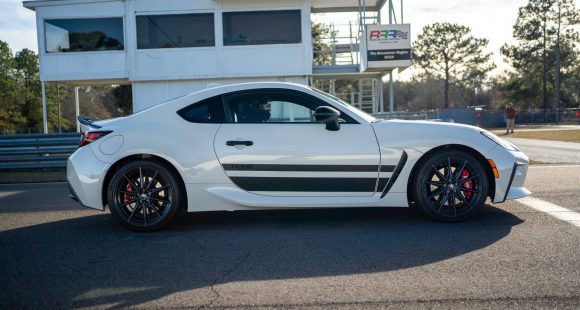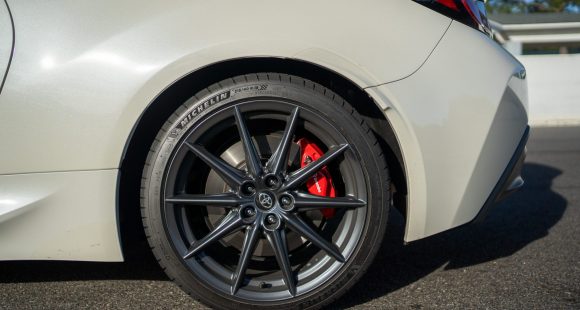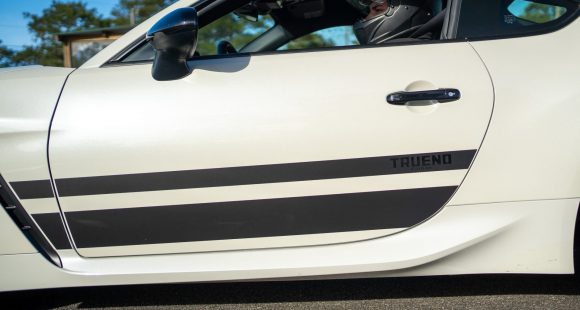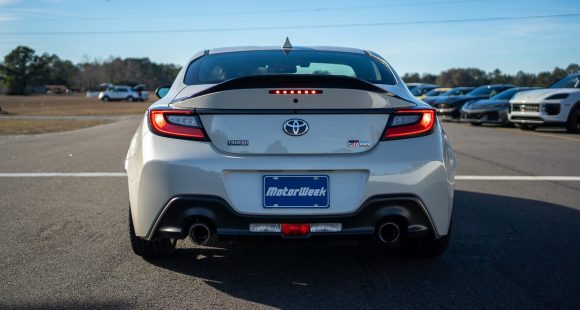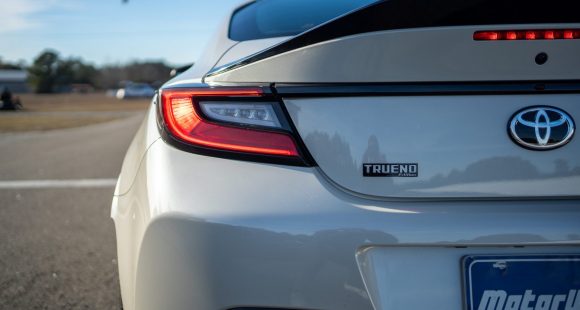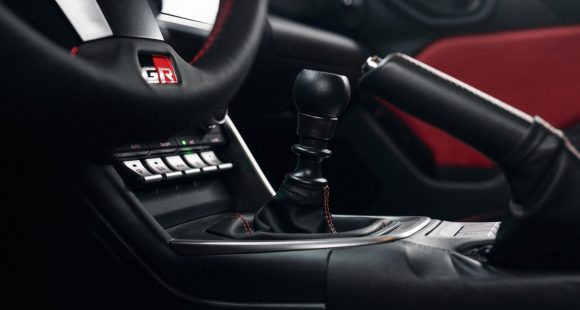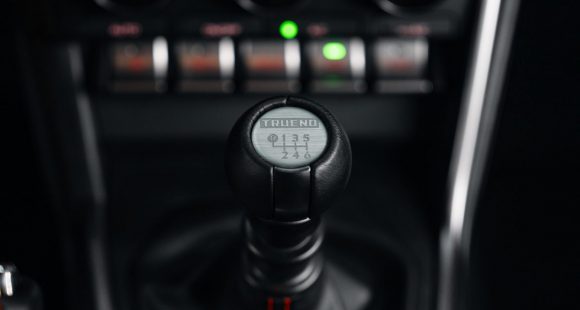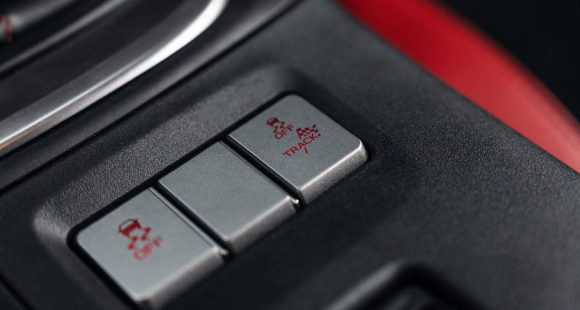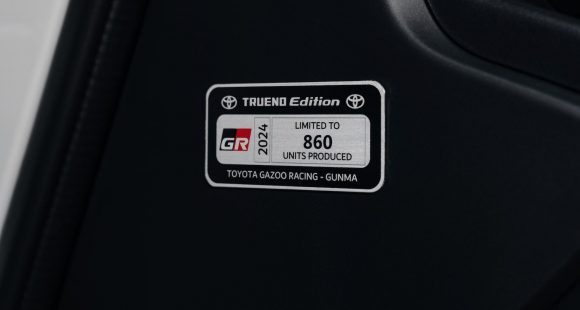The 1st generation Kia Sorento was a true, body-on-frame sport utility vehicle. And while it was a little rough around the edges, it quickly garnered a big following. 2nd generation saw Sorento follow the crossover crowd, losing the frame but gaining more features. Now, Sorento’s gen 3 redesign expands on that in both size and premium content. So let’s see if Sorento is making the right moves.
The all-new 2016 Kia Sorento is clearly not a major departure from its previous generation. Still, the redesign’s improvements all appear aimed at making Kia’s 3-row crossover a more family friendly and capable adventure vehicle. A familiar exterior design still manages to convey “larger Sorento”. And with that, it promises more interior room. Kia has also thrown the word “bolder” into the mix, and we agree it has more presence going down the road.
With that, a bigger grille dons the frontend; part of Kia’s new face that is taller, flatter, and much less pointy. Body side sculpting is smoothed out, the belt line moves higher, fitting a Sorento that is now 3-inches longer in both wheelbase and overall length.
Heading aft, there are more angles and more aggression. Taillights are larger, the bumper reflectors are now horizontal, and of course there’s a spoiler up top. 17-inch alloy wheels are standard; upper trim levels are equipped with 18s and beefy 19s.
All-in-all it’s an appealing design; smooth and classy. Still, it’s hard to miss the resemblance to Kia’s Sedona minivan.
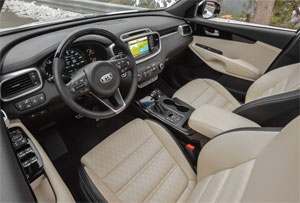 The last gen’s interior was a big step up, but this gen is an even bigger leap forward; with a smoother dash design, a much more premium feel, intuitive touchscreen interface, and some of the best steering wheel controls out there. Premium safety systems have also trickled down from the flagship K900.
The last gen’s interior was a big step up, but this gen is an even bigger leap forward; with a smoother dash design, a much more premium feel, intuitive touchscreen interface, and some of the best steering wheel controls out there. Premium safety systems have also trickled down from the flagship K900.
Uvo continues to add features and is available on LX models and above, a backup camera is standard on all but base L trim, and 8-inch touchscreen navigation is available on EX models and up. An optional 630-watt, 12-speaker Infinity sound system features a new Clari-Fi feature that squeezes a little more fidelity out of compressed audio files.
All gauges happily remain analog. On upper trims a 7-inch LCD info screen sits in the middle of the central speedometer. Front seats are Euro-firm and very comfortable; and yes, thanks to the added wheelbase and length, all seating positions gain room, with improved access to the 3rd row.
The cargo bay grows too. There’s now 11.0 cubic-ft. behind the optional 3rd row, 39.0 behind the 2nd row, and 74.0 total with all seats folded. That’s a gain of 1½ cubic-ft. Seats fold easily and there are very few gaps for stuff to get lost in.
Even more notable is the fit and finish of the cargo area. Partially-carpeted side panels should help keep things from getting all scratched up. An available smart power lift gate allows gives hands and foot free opening.
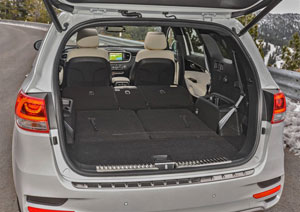 But, the upgrade that we like most, is the new Sorento’s greatly improved ride quality. Now bordering on excellent, it feels incredibly well-built and is very quiet.
But, the upgrade that we like most, is the new Sorento’s greatly improved ride quality. Now bordering on excellent, it feels incredibly well-built and is very quiet.
In addition to that longer wheelbase, the front suspension has a new H-shaped sub-frame design and Hydraulic Rebound Stopper shock absorbers. In back, a lengthened rear cross-member, with longer control arms, allows for more wheel travel.
Standard Drive Mode Select, with settings for Normal, Eco, and Sport; adjusts steering feel and transmission shift points.
There’s a trio of available engines. Base engine is a slightly improved version of last year’s, 2.4-liter I4, now with 185-horsepower and 178 lb-ft. of torque. Also carryover is the 3.3-liter V6 with 290-horsepower and 252 lb-ft. of torque that now tows 5,000-pounds.
Slotting in between, is a new option; the Optima’s 2.0-liter I4 turbo, here with 240-horsepower and 260 lb-ft. of torque. We estimate a 0 to 60 of 7.0 seconds. All Sorentos are equipped with 6-speed automatic transmissions.
All-wheel-drive is available with any engine. It’s the same basic automatic system, with logic that tries to predict wheel slip rather than just react to it. A lock mode splits torque front to rear 50/50 for speeds up to 20 miles-per-hour, and Torque Vectoring Curve Control aids handling even on dry pavement.
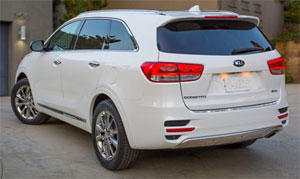 Government Fuel Economy Ratings for the new 2.0-liter all-wheel-drive are 19-City, 25-Highway, and 22-Combined. We averaged a good 22.4 miles-per-gallon of Regular. Resulting in a fair to middling Energy Impact Score of 15.0-barrels of oil annually and CO2 emissions of 6.9–tons.
Government Fuel Economy Ratings for the new 2.0-liter all-wheel-drive are 19-City, 25-Highway, and 22-Combined. We averaged a good 22.4 miles-per-gallon of Regular. Resulting in a fair to middling Energy Impact Score of 15.0-barrels of oil annually and CO2 emissions of 6.9–tons.
Pricing starts at $25,795 for a base L model. And with more options than ever the spread grows, with the top tier SX-L beginning at $40,795. Tack on $1,800 more for all-wheel-drive.
So, yes, Kia has done a fine job of growing the 2016 Sorento into a more capable and family-oriented crossover, successfully tending to the things that needed improving along the way. The last generation Sorento was a key vehicle for Kia, proving that they were fully capable of competing with the best in the segment. This one just might take them to the top.
Specifications
- Engine: 2.4 liter / 3.3 liter V6 / 2.0 liter
- Horsepower: 185 / 290 / 240
- Torque: 178 lb-ft. / 252 lb-ft. / 260 lb-ft.
- 0-60 mph: 7.0 seconds
- EPA: 19 mpg city/ 25 mpg highway (for 2.0 liter)
- Energy Impact: 15.0-barrels of oil/yr
- CO2 Emissions: 6.9 tons
Long Term Updates
Mileage: 2,900We’re just getting to know this 2016 Kia Sorento mid-size crossover, and much like the Nissan Murano also on our long-term lot, it seems to be the perfect size for a 5-passenger family hauler.
It also has an exterior design that’s more classy than family.
We chose the new 2.0-liter turbo-4 for our extended test, and with 240-horsepower, it has plenty of pep for passing. But you do have to keep your foot on it to stay up with Interstate speed limits. We’re averaging an OK 23.4 miles-per-gallon. But, seeing near 30 during highway cruise.
In our full road test we noted the Sorento’s improved ride was its best characteristic; and 2,900-miles of smooth commuting hasn’t changed our minds.
A word to the wise. Like many premium look crossovers, the Sorento’s exhaust pipe runs through the rear facia and is close to level with the trailer hitch. If you use a bike carrier or hitch basket you might find your cargo cooked or melted like we did. A riser/extender solved the problem for us.
Mileage: 6,6003-months in, and we’re trucking right along in our 2016 Kia Sorento, having so far driven 6,600-miles.
And while this mid-size Sorento has lots of fans around the office, its very tight turning radius has us maneuvering with ease; we do have some complaints.
All love the layout of the interior, but the thin leather seat fabric is wearing already.
The Sorento is a great long distance crossover delivering a smooth, compliant ride quality. Only a bit of wallow in corners detracts from that.
Two nitpicks are a console 4X4 lock button that’s easy to accidently engage, and an oversensitive outside switch for the power lift gate.
The powertrain itself, however; gets all praise. The 2.0-liter turbo and 6-speed automatic combo is treating us right with a responsive throttle and a fine 23.1 miles-per-gallon average.
So on balance, we love the Kia Sorento. Fix a few things and it just might be the perfect family CUV.
Mileage: 10,000We’re 5-months and a quick 10,000-miles into our yearlong look at Kia’s Sorento family crossover. And like families themselves, you have to take the good along with the bad.
The good: well everyone loves the multiple cameras stationed around the vehicle, and we’ve used them for everything from the typical parking situations to getting a peak at the trail ahead when doing some light off roading.
There’s also plenty of power from the turbo-4 and the sunroof lets a lot of the outside in, when you want it.
Now as for the bad: most have found the seats not up to the long haul task, and there are plenty of folks that still find paying well over $40,000 for a Kia a stretch no matter how nice it is.
Fuel economy is trending up, with our average now at 23.6 miles-per-gallon of Regular.
Mileage: 21,094Though after six months, and an odo at 21,094 miles, some of the Kia’s shine is wearing off. We not thrilled with the radar cruise control’s on/off abruptness; and when fully loaded with gear, the 2.0-liter turbo felt a little underpowered; which seemed to also upset the transmission.
The front seat passenger also has less than ideal knee/leg room.
On the plus side, we continue to find the steering wheel controls and UVO infotainment among the best in the business. Kia material quality continues to make big improvements too, and the load floor is spacious and continuous. Also, it’s has a great, mostly quiet highway ride.
And of course, the 23.1 miles-per-Regular-gallon we’re averaging is hard to beat in a larger family hauler.
Mileage: 24,000Our midsize 2016 Kia Sorento crossover emerged from our mid-Atlantic winter just fine.
In 8-months’ time our odo is approaching 24,000-miles, with fuel economy up slightly from our last report to 23.3 miles-per-gallon. Quiet, smooth, and comfortable sums up all that time.
And we’re feeling contented with our choice of opting for the 240-horsepower turbo-I4, as it offers more than adequate power for daily family use. So, no need to go for the 290–horsepower V6 unless you load up a lot or need the full 5K of towing capacity.
No problems to report this go around as the interior is holding up pretty well, with flexibility that’s about as close to a minivan as you can get without actually being one.
Mileage: 26,000We’ve just hit 26,000-miles in our long-term Kia Sorento midsize crossover, as spring is slowly turning to summer.
Which means that the climate control is doing a lot more cooling than heating these days. And some noise coming from our Sorento’s A/C system necessitated a trip to the dealer, where a replacement high pressure hose took care of the problem.
While we were there, it turns out there were some recalls and service bulletins pending, which required an additional night’s stay waiting for a seatbelt part to arrive.
But now that we’re back on the road and safely buckled in, there are a few more road trips ahead before we finish out our “year of Sorento”.
Lately though, it has been seeing more commuting and airport shuttle duties than long distance journeys; which explains our slight dip in fuel economy from last report, to a still good 23.2 miles-per-gallon from the 2.0-liter turbo-4.
Mileage: 30,000Time is quickly winding down with our 2016 Kia Sorento, though we do have a few more weeks left to enjoy Kia’s biggest crossover.
We’re quickly approaching 30,000-miles, and this family truckster just keeps trucking on.
Fuel economy from the 240-horsepower 2.0-liter I4 turbo with 6-speed automatic transmission is on a slight upswing to 23.3 miles-per-gallon, and things have been problem free since our last report. Seat comfort continues to be a debate, as the latest road trip report praised the Sorento’s great seats that other staffers on previous trips have dished.
Other comments took note of an increasing amount of roll in corners; and one driver noticed a few “catches” in the steering wheel on slight turns at slow speeds.
We think the cornering attitude just indicates things are now well broken in; and the steering wheel issue went away before we had time to figure out where it came from.
Mileage: 33,250Just back from one final road trip, everything we’ve said about it over the last year has been confirmed. It’s one fantastic long distance cruiser.
The 240-horsepower 2.0-liter turbo I4 is more than adequate for commuting, but can get overwhelmed when fully loaded.
And, you certainly can load a lot of stuff in here, with 38.8 cubic-ft. of cargo space before you fold seats.
We have experienced a few awkward clunks from the 6–speed automatic transmission lately, but it has delivered decent fuel economy; averaging 22.7 miles-per-gallon after 33,250 very varied miles.
We will certainly miss what is easily one of Kia’s best efforts yet.
But the Sorento’s departure frees up a parking spot for another Kia, a 2016 Optima sedan. And another new ride has also arrived, this 2016 Volkswagen Beetle Dune. Let’s see what kind of fun we can kick up in this time machine.







 The last gen’s interior was a big step up, but this gen is an even bigger leap forward; with a smoother dash design, a much more premium feel, intuitive touchscreen interface, and some of the best steering wheel controls out there. Premium safety systems have also trickled down from the flagship K900.
The last gen’s interior was a big step up, but this gen is an even bigger leap forward; with a smoother dash design, a much more premium feel, intuitive touchscreen interface, and some of the best steering wheel controls out there. Premium safety systems have also trickled down from the flagship K900.  But, the upgrade that we like most, is the new Sorento’s greatly improved ride quality. Now bordering on excellent, it feels incredibly well-built and is very quiet.
But, the upgrade that we like most, is the new Sorento’s greatly improved ride quality. Now bordering on excellent, it feels incredibly well-built and is very quiet.  Government Fuel Economy Ratings for the new 2.0-liter all-wheel-drive are 19-City, 25-Highway, and 22-Combined. We averaged a good 22.4 miles-per-gallon of Regular. Resulting in a fair to middling Energy Impact Score of 15.0-barrels of oil annually and CO2 emissions of 6.9–tons.
Government Fuel Economy Ratings for the new 2.0-liter all-wheel-drive are 19-City, 25-Highway, and 22-Combined. We averaged a good 22.4 miles-per-gallon of Regular. Resulting in a fair to middling Energy Impact Score of 15.0-barrels of oil annually and CO2 emissions of 6.9–tons.




































